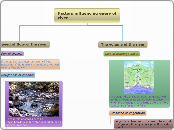af CHRIS DANIELS LEE N/A 10 år siden
330
Structure and Adaptation of rainforests
Rainforests are characterized by a variety of structural layers, each with unique features and vegetation types. The canopy layer consists of dense trees with interlocking crowns, creating a nearly continuous cover.









